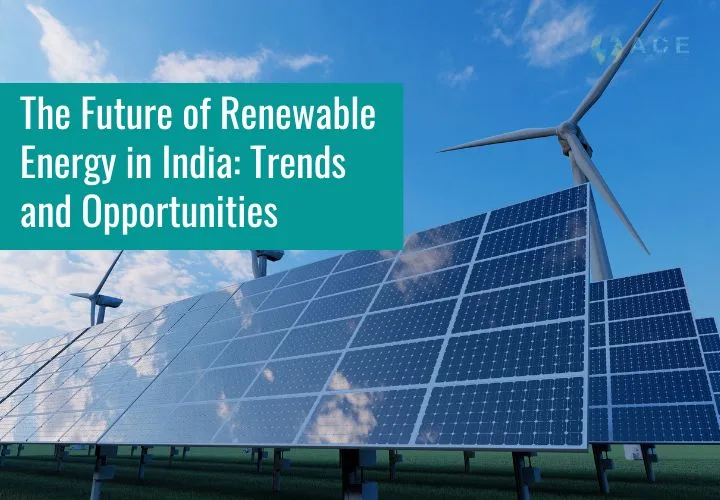
As the world shifts focus to sustainable energy production, India once again leads the global transition towards clean energy. The country is also increasingly adopting renewable energy practices to meet the increased energy requirements of its growing population.
This blog examines India’s clean energy initiatives alongside contemporary market trends and the role of EPC companies in India’s market.
Introduction: India’s Renewable Energy Transformation
The transition to renewable energy is an achievement for India. Over the past decade, India has undergone a mental shift to move away from fossil fuel dependence and towards developing sustainable energy systems.
India is an ideal candidate worldwide to lead the green energy movement as it possesses abundant sunlight, powerful coastal winds and other natural resources. Our joint efforts are helping to develop a sustainable, environment-friendly future.
Achieving 250 GW Renewable Capacity by 2026
The Indian government has set a target to expand its renewable energy capacity to 250 GW by 2026, in line with its clean energy objectives. EPC renewable energy companies are thus establishing solar parks, wind farms, and hybrid energy systems all over the country to contribute to the country’s renewable energy infrastructure.
The achieved progress is supporting the country in reducing emissions, promoting employment growth, and driving economic development in rural areas, while also improving nationwide access to clean energy.
Solar Power: Leading the Clean Energy Charge
The country’s tropical climate means we get 300 sunny days per year, making solar power the most promising clean energy source. Solar energy companies are thus establishing extensive solar power facilities, rooftop solar systems and floating solar projects to fulfil the increasing power requirements.
Government schemes, such as the PM-KUSUM programme, net metering schemes, and other solar subsidies, are driving sectoral adoption of solar energy. The success of India’s clean energy mission relies on solar power, as it is becoming less costly with evolving technology.
Wind Energy: Expanding Capacity Across States
Wind energy plays a significant role in India’s ongoing development of renewable energy.
The Asian record for the largest wind farms currently exists in states such as Tamil Nadu, Gujarat, and Maharashtra. The EPC companies in India today are looking to expand existing wind projects and also scouting new potential wind power opportunities along India’s maritime borders.
Technology related to turbines and grid integration has improved the efficiency, reliability, and affordability of wind power projects. With the stabilisation of wind energy policy in India, the capacity for wind-generated energy is set for rapid growth shortly.
Green Hydrogen: Fuelling India’s Sustainable Future
Policymakers hail green hydrogen as the upcoming solution for clean power in India. The process of producing green hydrogen splits water into hydrogen and oxygen, which can be used in transportation, steel, and chemical industries.
At this stage, energy specialists are exploring how to design green hydrogen plants, storage units, and the supply chain needed to develop this industry in detail. In addition, the Indian government has announced a National Green Hydrogen Mission, recognising the importance of green hydrogen for achieving energy independence and decarbonisation targets.
Policy Support: Enabling Growth in Renewables
The growth of renewable energy in India owes its success to the strong policy backing. The government established solar module production incentives through viability gap funding, tax benefits and production-linked incentives. The policies supporting solar-wind hybrid projects with flexible grids and green open access have made conditions favourable for Indian investors and EPC renewable energy companies looking to work in the field.
The national renewable energy sector is benefiting from straightforward regulatory frameworks, simplified project approval procedures and supportive financial solutions that facilitate the development of new renewable energy projects at new locations in the country.
Technological Advancements Enhancing Energy Efficiency
Artificial intelligence, data analytics, and machine learning technologies are helping to maximise plant operational efficiency. The production and management of renewable energy are undergoing revolutionary changes with smart grids, advanced battery technology and floating solar power systems.
The use of drone real-time monitoring, predictive maintenance, and remote management techniques allows companies to minimise disruptions in operations, leading to increased project profitability.
Conclusion: Embracing a Greener Tomorrow
The future of renewable energy in India looks bright due to rapid technological advancements, strong government support, and the efforts of EPC companies in India. India is thus on its way to becoming a global leader in clean energy.
Let’s work together to build a future where clean energy is not just an option but the base of a healthier, greener future.

